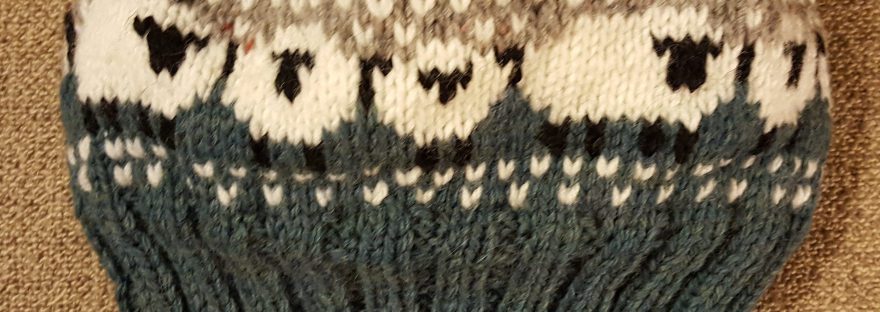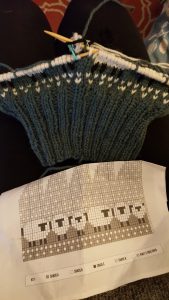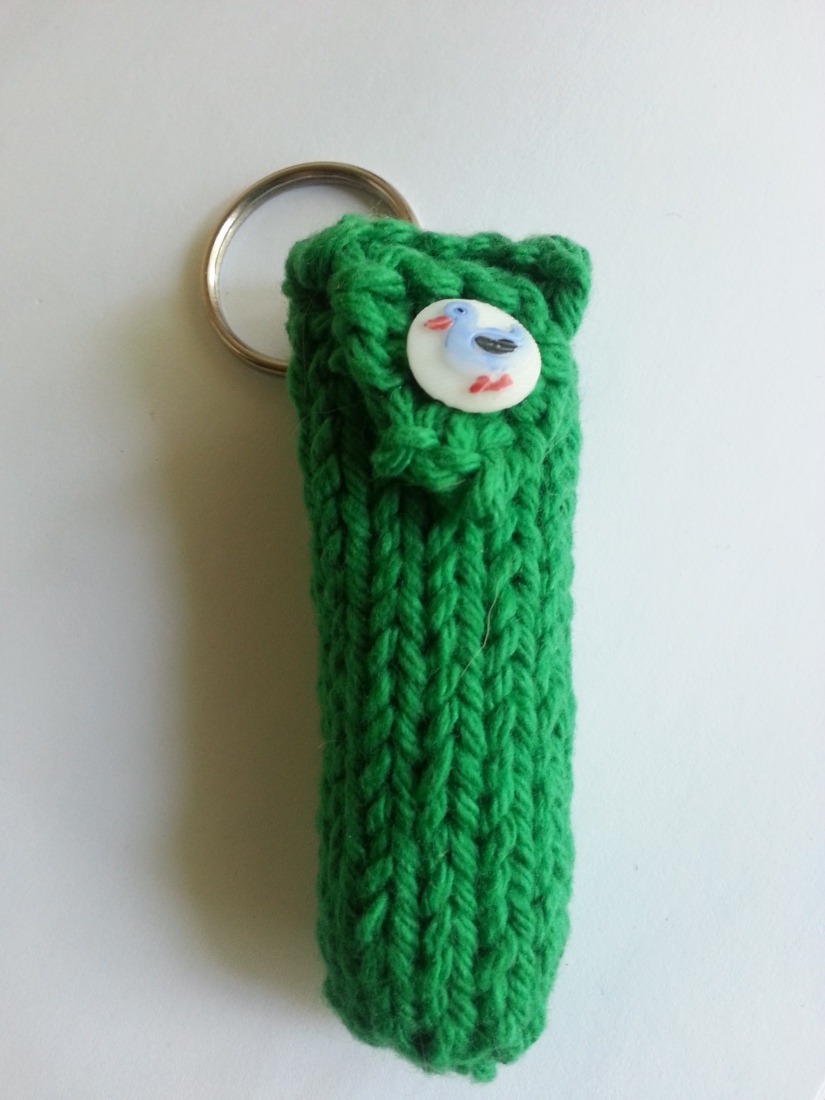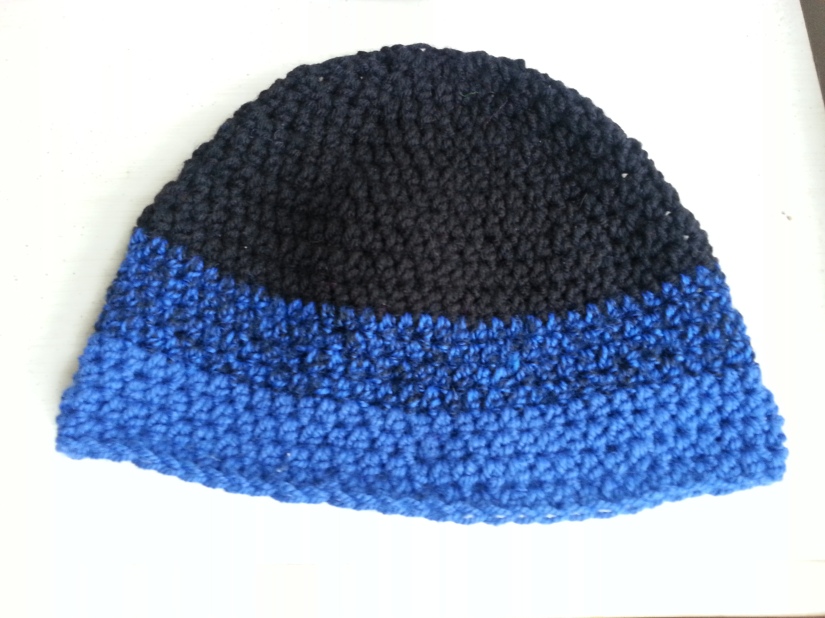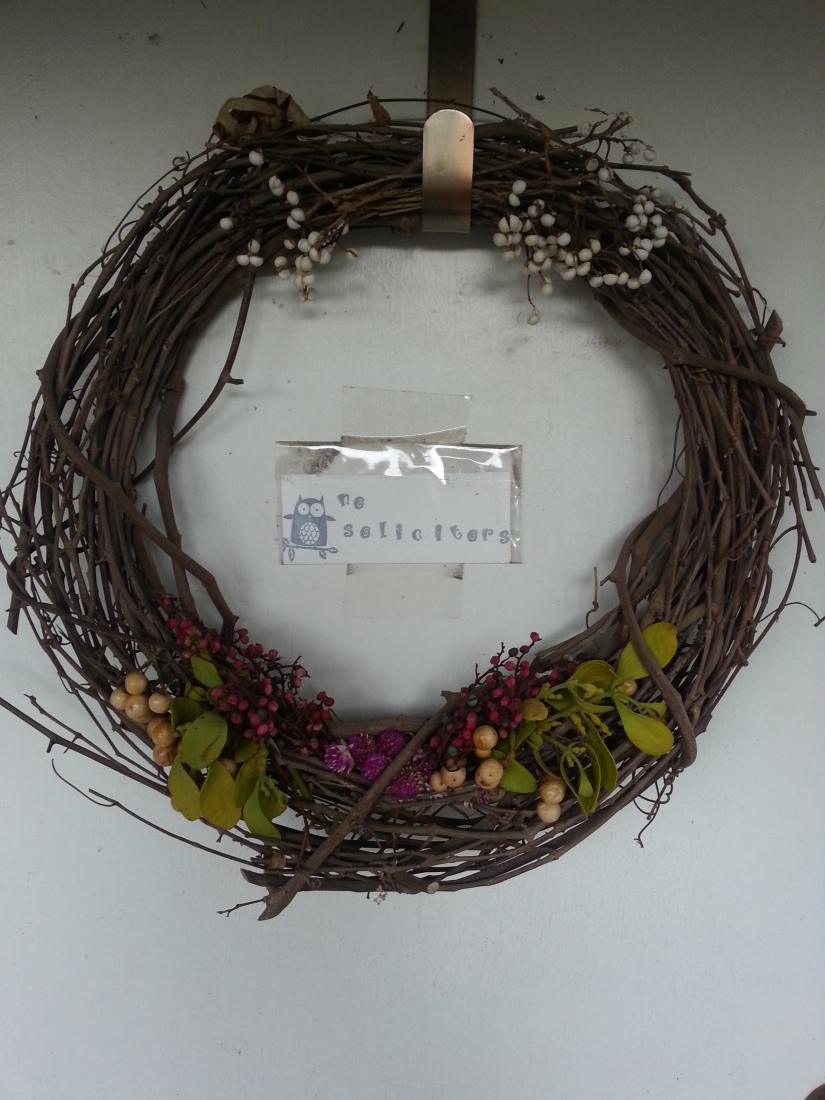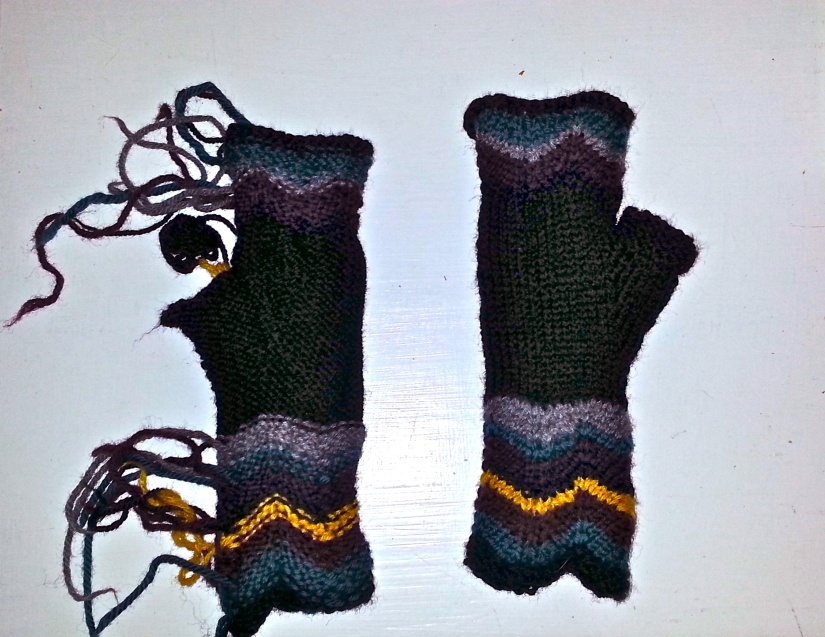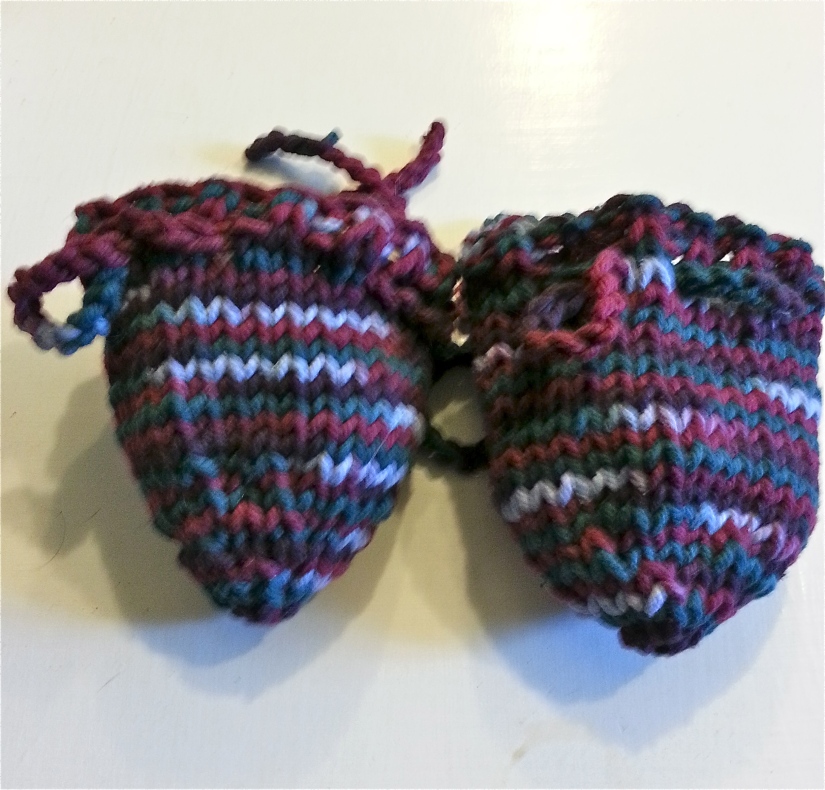Headbands! Lots of headbands. That’s what this post is about. Headbands with names. And possibly superpowers.

(Forgive the lack of posts, I’ve been busy!)
Last summer, I knit my first headband. Then this winter, after finishing the green sweater, I reverted back to headband making. They are quicker than a big project, they are great for using up odd bits of yarn, and they’re great for playing with new designs. Most of these are my own patterns. Here’s how I made them, in the order that I made them.
Rocknasium
 This is a multicolor garter stitch headband in cotton that gets a lot of use at the rock climbing gym. I knit it flat, in long rows on circular needles, then sewed the two short ends together. Make sure you use a stretchy cast-on and bind-off method. There isn’t a pattern besides knitting garter stitch, but you do need to measure your gauge and your head circumference so you can knit it in long rows and get the horizontal stripes. I’d recommend going a few inches down from your head size as it will stretch.
This is a multicolor garter stitch headband in cotton that gets a lot of use at the rock climbing gym. I knit it flat, in long rows on circular needles, then sewed the two short ends together. Make sure you use a stretchy cast-on and bind-off method. There isn’t a pattern besides knitting garter stitch, but you do need to measure your gauge and your head circumference so you can knit it in long rows and get the horizontal stripes. I’d recommend going a few inches down from your head size as it will stretch.

The color pattern above is one row gray, one row orange, two rows green, one row orange, one row gray. The one below I made for a friend, and that one was two gray, one blue, two green, two gray, one blue, one gray. If you don’t want a break in the color stripe, you can knit them in the round or leave a yarn tail of each color and weave them in as I did.


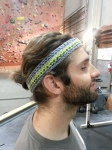
These are the easiest of headbands! And they will definitely help you with the crux of that overhung 5.11b project. This is just a fact.
Teenage Mutant Ninja Headband
 The next headband I made was way more complicated! I got really into honeycomb brioche stitch and was determined to make a huge headband from it. The colors and the shapes somehow remind me of ninja turtles, hence the name. Bonus points if you know the names of the turtles who wore the orange and blue masks!*
The next headband I made was way more complicated! I got really into honeycomb brioche stitch and was determined to make a huge headband from it. The colors and the shapes somehow remind me of ninja turtles, hence the name. Bonus points if you know the names of the turtles who wore the orange and blue masks!*

For this headband you will need three colors of cotton yarn and size 5 needles or whatever will get you a gauge of 8 stitches per inch unstretched/ 6.5 stretched. I know that’s kind of specific but that’s how I accounted for the fact that headbands have to stretch. If you have a smaller head you should adjust your gauge as needed. You’ll also need a crochet hook.
CO 108 in Color A
r1 and r2: k
r3: Color B k1, sl 2 p wise, *k6, sl2. repeat from * to last st, k1
r4: p1, sl 2, *p6, sl2, repeat from * to last st, p 1
r5: repeat row 3 but carry Color A up the side
r6: repeat row 4
r7: repeat row 3
r 8: repeat row 4
r 9 and r 10: color A knit
r 11: k 5, sl 2, *k6, sl 2, repeat from * to last 5 sts, k5
Add Color C here and repeat. Cast off. Sew short ends together.
After casting off: Using a crochet hook and Color A, add a single chain stitch border to the edges. If your headband is seeming like it will be a bit loose, add some decreases (i.e. chain two knit stitches together) to tighten it up.
 Your headband should look pretty wonky at this point—make sure to block it before wearing if it does! That’s how I got mine to lay flat.
Your headband should look pretty wonky at this point—make sure to block it before wearing if it does! That’s how I got mine to lay flat.

Wearing this headband will definitely give you the power to finally defeat Shredder with your mad katana/nunchuck skills …or, you know, keep your hair out of your face during zumba. One of the two.
*Answer: Michelangelo and Leonardo, respectively.
Jessa-Hannah Bluebell Poem

This is another, smaller honeycomb brioche stitch headband. I started on this design nine months ago, but it took a long time and a fair number of mishaps for it to finally emerge in its complete form, hence the name (It comes from the last episode of season 4 of Girls—spoiler warning!)

I used the same yarn and knitting needles as the big brioche headband, but knit it vertically and with just two colors. Make sure your colors work together! I had to start over when I realized my first, yellow version of this headband looked like a sickly easter egg.
Provisional Cast on: 15 sts in Color A
r1 and r 2: knit
r3: With Color B, k 1, sl 1 p wise, k 3, sl 1*
r4: p 1, sl 1, p 3
r5: repeat row 3
r6: repeat row 4
r 7 and r8: With Color A, knit
r:9 With Color B k 3, sl 1 p wise, k 3*
r 10: p3, sl 1 pwise
r11: repeat row 9
r12: repeat row 10
You’ll need to join the two short ends to form a headband by ending either after a row 12 or a row 6. Provisional cast on will make it easiest. I used a three needle bind off. Once again, blocking will help the brioche honeycomb stitch look its best.
No matter what you do, the edges will still curl a bit. Overall, I like the pattern a lot, so I decided I can deal with some rolling of the edges. Or, as Hannah put it, “I can’t guarantee perfection, but I can guarantee intrigue.”

This tiny brioche headband will not help you deliver your own baby or anything, but it will give you a new appreciation for the beauty of little things. What’s more magical than that?
Mahna Mahna

This is one of the few patterns that is not my own! I used this free cabled headband pattern (also on ravelry). I won’t repost it here, but if you can handle a basic cable this headband will be no problem. I used my own unique yarn blend of two strands pink mohair, one strand recycle red sweater wool (heavily featured in my knit tank top in a previous post). Which is why I call this one Mahna Mahna, because it reminds me of the two Muppets from that one song.

One of the nice things about making a wide cabled headband: it doubles as an earwarmer! This headband, like the Muppet song, will getting stuck in/on your head. It will give you the ability to feel warm and fuzzy even on a cold dreary day.
Minnesota

These are two color linen stitch headbands! Linen stitch is fantastic for headbands because it lays nice and flat. These two are named Minnesota because that’s where they went to live.
I used Michelle Lewis’ linen stitch headband recipe, which seems rather underutilized, as a guide for these headbands. But since I was using two colors, this craftsy guide, especially the suggestion for how to avoid color pooling, was very helpful too.
The two-color linen stitch recipe:
Provisional cast on: even number of stitches in Color A
For your first ever row, skip to Row 2 (r 2) to avoid color pooling.
r 1: Knit 1, yarn front, slip 1, yarn back. repeat to end of the row
r 2: Purl 1, yarn back, slip 1, yarn front. repeat to end of the row
Repeat these two rows with Color B, then repeat them with Color A, etc. When the headband is long enough, sew the ends together.
For the top headband, I used the same yarn and needles as most of the projects here. For the bottom headband, I used size 2 needles and two partial balls of a wool blend, self-striping sock yarn, which created a more intricate looking pattern.
 These headbands will give you the ability to travel around the country and/or world having amazing adventures and connecting with inspirational people. Or they will give you the ability to get out of the house on a cold winter evening. Depending on what you need that day.
These headbands will give you the ability to travel around the country and/or world having amazing adventures and connecting with inspirational people. Or they will give you the ability to get out of the house on a cold winter evening. Depending on what you need that day.
Heartbeats
 I was all ready to write this post a week ago, but then I was like, you what I need to do? KNIT ANOTHER HEADBAND. So I did. I decided to call it Heartbeats, even though it has been pointed out to me the graph of a heartbeat does not follow this neat curve. I was inspired by the Jose Gonzalez cover of The Knife song “Heartbeats.”
I was all ready to write this post a week ago, but then I was like, you what I need to do? KNIT ANOTHER HEADBAND. So I did. I decided to call it Heartbeats, even though it has been pointed out to me the graph of a heartbeat does not follow this neat curve. I was inspired by the Jose Gonzalez cover of The Knife song “Heartbeats.”
I told myself to write down the pattern as I came up with it, but either I forgot or I misplaced it, so I’m going to reverse engineer it for you right now:
Heartbeats recipe:
Provisional Cast on 11 sts in Color A
From here on, the three stitches on either edge are your border stitches—they will always be knit with the pattern Knit, Purl, Knit. The five middle stitches are stockinette and they will have the color work. Here is the chart:

As you can tell, you need to make sure to finish at the end of a complete chart for your heartbeat to be…complete. And as always, you’ll need to block it well—especially since there is a lot of stockinette. But it looks really cool laid out flat!
 This headband gives you the power of the heart—wherever that may take you and for whatever that is worth. (It seemed important to the Planeeters!) It may or may not help you sing like Jose Gonzalez.
This headband gives you the power of the heart—wherever that may take you and for whatever that is worth. (It seemed important to the Planeeters!) It may or may not help you sing like Jose Gonzalez.

Hope you enjoyed these headband patterns!


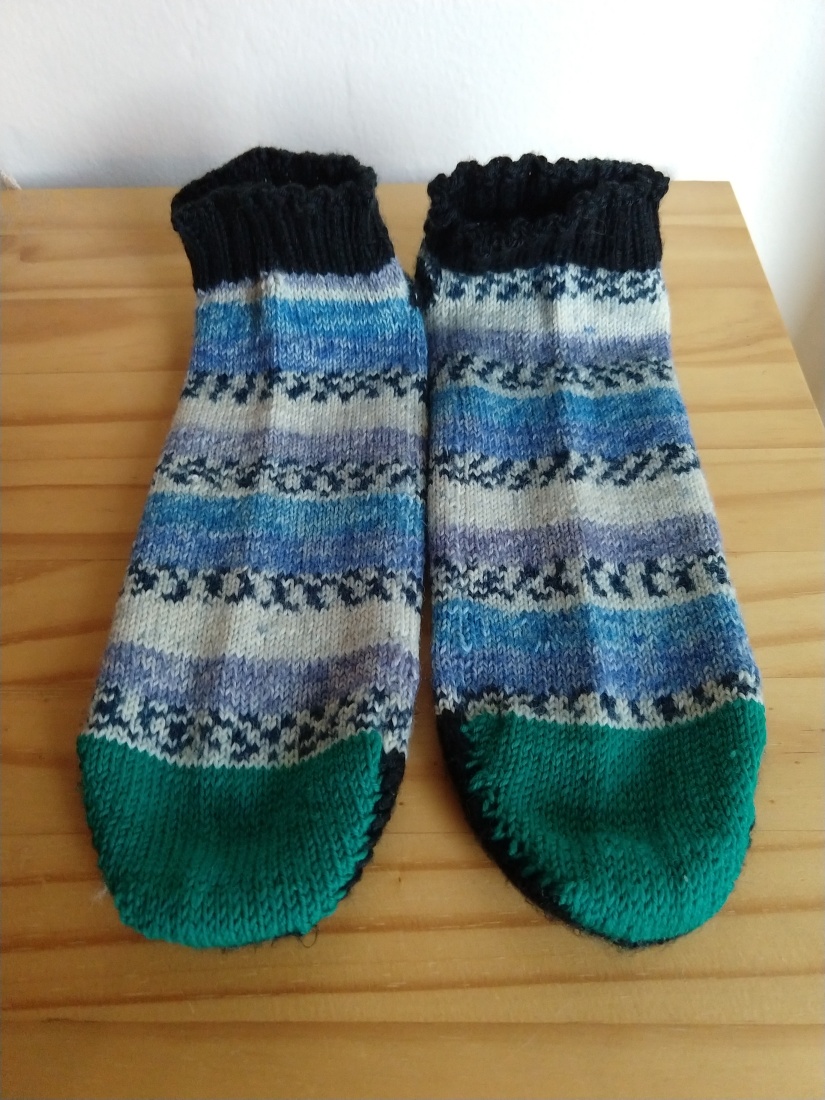
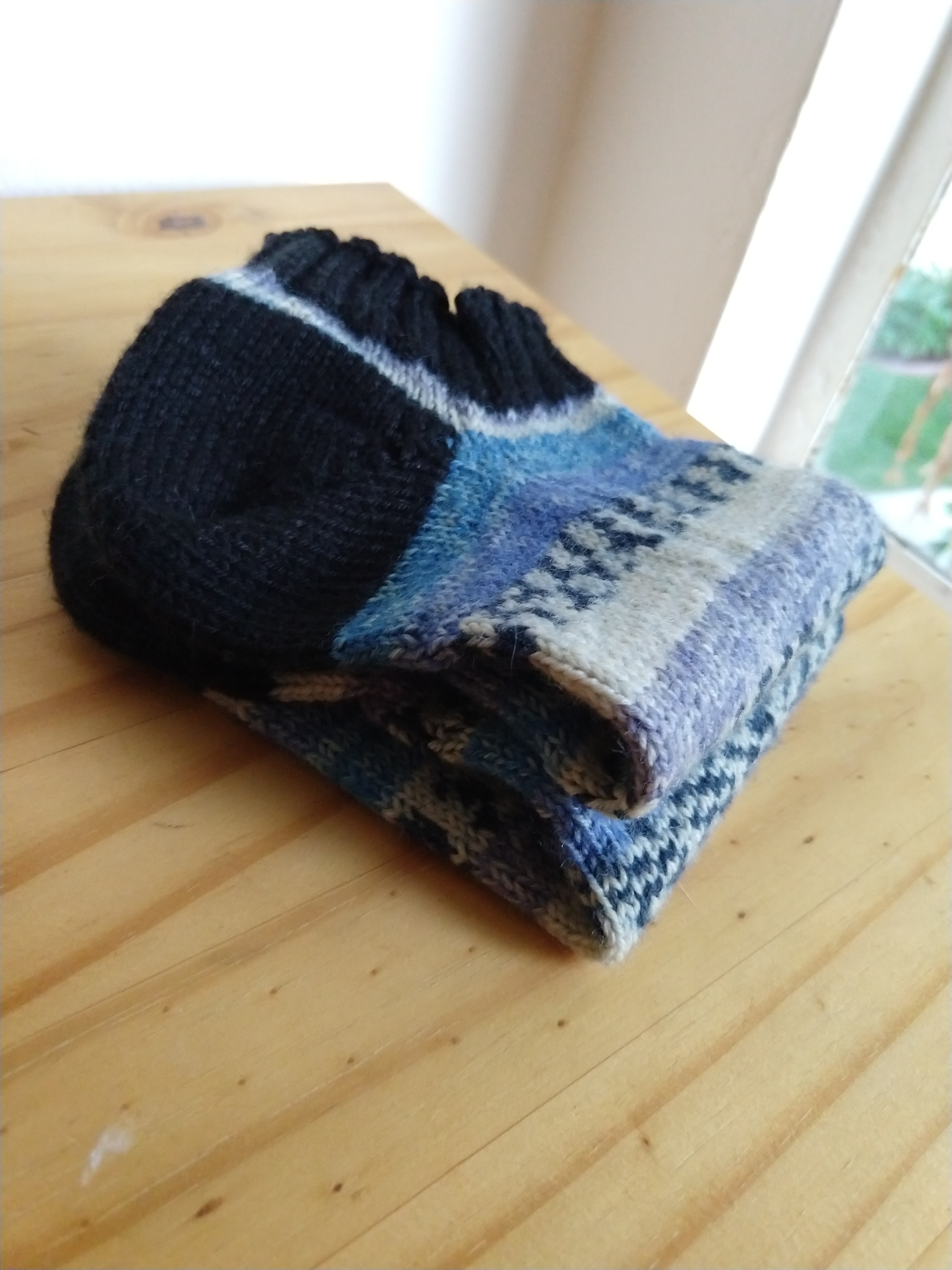 I think 2018 is the first year that I’ve ever finished two pairs of socks! And just in time for Socktober. I mean, technically I finished them in September, but with highs in the 80s, it as been too warm for them to get any wear. Yet. So these are Socktober socks for sure.
I think 2018 is the first year that I’ve ever finished two pairs of socks! And just in time for Socktober. I mean, technically I finished them in September, but with highs in the 80s, it as been too warm for them to get any wear. Yet. So these are Socktober socks for sure.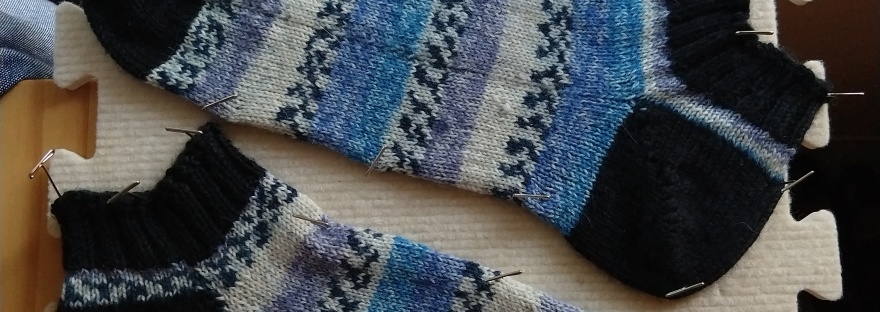
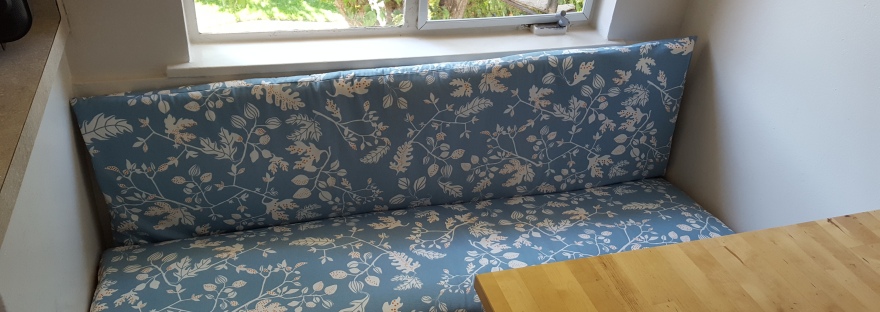

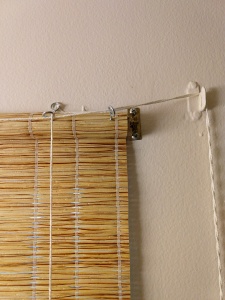



 Cutting up a sheet into strips and winding it into a continuous ball takes a surprising amount work. There are plenty of video tutorials for making continuous strips (
Cutting up a sheet into strips and winding it into a continuous ball takes a surprising amount work. There are plenty of video tutorials for making continuous strips (





 Last weekend was Tour d’Davis, where my flock and I celebrated this costumed bicycle tour of town with our “yarnbombed” bikes. I am particularly proud of creating this countryside scene for my top tube, complete with sheep grazing on the hillside and a matching pouch for my cellphone. The entire thing is my own design. I call this cozy pattern Pastoral.
Last weekend was Tour d’Davis, where my flock and I celebrated this costumed bicycle tour of town with our “yarnbombed” bikes. I am particularly proud of creating this countryside scene for my top tube, complete with sheep grazing on the hillside and a matching pouch for my cellphone. The entire thing is my own design. I call this cozy pattern Pastoral. If you want to do this project on your own bicycle, you’re in luck—it has a very low baaaa-r to entry. All yarn used here was leftover from other projects:
If you want to do this project on your own bicycle, you’re in luck—it has a very low baaaa-r to entry. All yarn used here was leftover from other projects:








 We searched through
We searched through 



